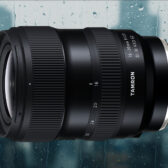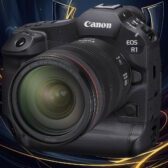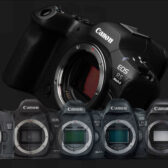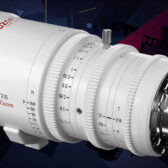Here is a listing of all of the available third-party lenses for the RF mount. Canon has been coming down on third-party lenses with autofocus for patent violations, so most lenses out there are manual focus only. We assume that we will see third-party autofocus lenses for the RF mount in the future.
If we’re missing any RF mount lenses, please let us know.
7artisans | AstrHori | Brightin Star | Cheecar | Fujinon | Funleader | IRIX | KamLan | Kipon | Lensbaby | Meike | Meyer-Optik Görlitz | Mitakon Zhongyi | NiSi | Rokinon | Samyang | SIGMA | Sirui | Tamron | Tokina | TTArtisan | Venus Optics/Laowa | Vazen | Viltrox | Yasuhara | Yongnuo
7artisans
- 7artisans Photoelectric RF 10mm f/2.8 Fisheye $256
- 7artisans Photoelectric RF 50mm f/0.95 $209
- 7artisans Photoelectric RF 50mm f/1.05 $399
- 7artisans Photoelectric RF 60mm f/2.8 Macro Mark II $179
- 7artisans Photoelectric RF 60mm f/2.8 Macro $159
Cinema Lenses
- 7artisans Photoelectric RF 25mm T1.05 Vision Cine $549
- 7artisans Photoelectric RF 35mm T1.05 Vision Cine $499
- 7artisans Photoelectric RF 50mm T1.05 Vision Cine $430
- 7artisans Photoelectric RF 50mm T2.0 Spectrum Prime Cine $379
- 7artisans Photoelectric RF 85mm T2.0 Spectrum Prime Cine $459
AstrHori
Brightin Star
Cheecar
- Cheecar RF 14mm f/2.8
Fujinon
Cinema Lenses
Funleader
IRIX
Cinema Lenses
- IRIX Cine RF 11mm T4.3 $1095
- IRIX Cine RF 15mm T2.6 $995
- IRIX Cine RF 21mm T1.5 $1195
- IRIX Cine RF 30mm T1.5 $1195
- IRIX Cine RF 45mm T1.5 $1095
- IRIX Cine RF 150mm T3.0 Macro 1:1 $1195
KamLan
- KamLan RF 55mm f/1.4 (unknown price)
Kipon
- Kipon Elegant RF 24mm f/2.4 $723
- Kipon Elegant RF 35mm f/2.4 $678
- Kipon Elegant RF 50mm f/2.4 $471
- Kipon Elegant RF 75mm f/2.4 $355
- Kipon Elegant RF 90mm f/2.4 $523
Lensbaby
- Lensbaby Obscura RF 16mm Pinhole Pancake $249
- Lensbaby Trio 28 RF 28mm f/3.5 $249
- Lensbaby Velvet 28 RF 28mm f/2.5 $549
- Lensbaby Sol 45 RF 45mm f/3.5 $199
- Lensbaby Optic Swap 50mm Pinhole $179
- Lensbaby Spark 2.0 RF 50mm f/2.5 $199
- Lensbaby Velvet 56 RF 56mm f/1.6 $449
- Lensbaby Velvet 85 RF 85mm f/1.8 $499
- Lensbaby Optic Swap Founders Edition $799
- Lensbaby Optic Swap Macro Collection $599
Lomography
- Lomography Atoll RF 17mm f/2.8 Art $399
- Lomography Petzval 55 mm f/1.7 MKII $399
Meike
Cinema Lenses
- Meike RF 10mm T2.2 Cine $599
- Meike RF 16mm T2.5 FF Prime Cine $1199
- Meike RF 24mm T2.1 FF Prime Cine $1198
- Meike RF 25mm T2.2 Cine $449
- Meike RF 35mm T2.1 FF Prime Cine $998
- Meike RF 35mm T2.2 Cine $449
- Meike RF 50mm T2.1 FF Prime Cine $998
- Meike RF 50mm T2.2 Cine $449
- Meike RF 60mm T2.2 Cine $449
- Meike RF 85mm T2.2 Cine $449
- Meike RF 85mm T2.1 FF Prime Cine $998
- Meike RF 105mm T2.1 FF Prime Cine $998
- Meike RF 135mm T2.4 FF-Prime Cine $1099
Meyer-Optik Görlitz
- Meyer-Optik Görlitz Lydith RF 30mm f/3.5 II $899.00
- Meyer-Optik Görlitz Trioplan RF 35mm f/2.8 II $899.00
- Meyer-Optik Görlitz Trioplan RF 50mm f/2.8 II $899.00
- Meyer-Optik Gorlitz Biotar RF 58mm f/1.5 II $1199
- Meyer-Optik Görlitz Primoplan RF 58 mm f/1.9 II $1199.00
- Meyer-Optik Görlitz Primoplan RF 75mm f/1.9 II $999.00
- Meyer-Optik Görlitz Trioplan RF 100mm f/2.8 II $999.00
Mitakon Zhongyi
- Mitakon Zhongyi Speedmaster RF 50mm f/0.95 $499
- Mitakon Zhongyi Speedmaster RF 90mm f/1.5 $549
- Mitakon Zhongyi Speedmaster RF 135mm f/2.5 $299
Cinema Lenses
NiSi
- NiSi RF 9mm f/2.8
- NiSi RF 15mm f/4 Sunstar $579
Rokinon
- Rokinon RF 14mm f/2.8 UMC $399
- Rokinon RF 85mm f/1.4 UMC $349
Cinema Lenses
- Rokinon RF 14mm T3.1 DSX Ultra Wide-Angle Cine $399
- Rokinon RF 24mm T1.5 DSX High-Speed Cine $649
- Rokinon RF 35mm T1.5 DSX High-Speed Cine $649
- Rokinon RF 50mm T1.5 DSX High-Speed Cine $469
- Rokinon RF 85mm T1.5 DSX High-Speed Cine $369
Samyang
Samyang no longer manufactures RF mount lenses in most of the world. Samyang still makes RF mount lenses under the Rokinon brand.
Cinema Lenses
- Samyang RF 24mm T1.5 Cine VDSLR MK2 $749
- Samyang RF 35mm T1.5 Cine VDSLR MK2 $649
- Samyang RF 50mm T1.5 Cine VDSLR MK2 $599
- Samyang RF 85mm T1.5 Cine VDSLR MK2 $449
SIGMA
SIGMA does not currently offer any RF mount lenses, and there is no word on when we can expect SIGMA to enter the market.
Sirui
Cinema Lenses
- Sirui RF 24mm f/2.8 Super35 Anamorphic 1.33x $999
- Sirui RF 35mm f/1.8 Super35 Anamorphic 1.33x $799
- Sirui Venus RF 35mm T2.9 1.6x Anamorphic
- Sirui RF 50mm f/1.8 Super35 Anamorphic 1.33x $699
- Sirui RF 50mm T2.9 Full Frame 1.6x Anamorphic $1499
- Sirui RF 75mm T2.9 Full Frame 1.6x Anamorphic $1499
- Sirui RF 75mm f/1.8 Super35 Anamorphic 1.33x $899
- Sirui Venus RF 100mm T2.9 1.6x Anamorphic
Tamron
As with SIGMA, Tamron does not have any RF mount lenses, and there is no timeline for them to enter the market.
Tokina
TTArtisan
- TTArtisan RF 7.5mm f/2 Fisheye $139
- TTArtisan RF 11mm f/2.8 Fisheye $215
- TTArtisan RF 17mm f/1.4 $118
- TTArtisan RF 21mm f/1.5 $239
- TTArtisan RF 25mm f/2 $55
- TTArtisan RF 35mm f/1.4 $73
- TTArtisan RF 40mm f/2.8 Macro $99
- TTArtisan RF 50mm f/0.95 $218
- TTArtisan RF 50mm f/1.2 $98
- TTArtisan RF 50mm f/1.4 $225
- TTArtisan RF 50mm f/2 $69
Vazen
Cinema Lenses
- Vazen RF 28mm T2.2 1.8x Anamorphic $3250
- Vazen RF 40mm T2 1.8x Anamorphic $3250
- Vazen RF 65mm T2 1.8x Anamorphic $3250
Venus Optics
- Venus Laowa RF 11mm f/4.5 FF RL $699
- Venus Laowa RF 12mm f/2.8 Zero-D $949
- Venus Laowa RF 12-24mm f/5.6 $649
- Venus Laowa RF 14mm f/4 FF RL Zero-D $489
- Venus Laowa RF 15mm f/2 FE Zero-D $749
- Venus Laowa RF 15mm f/4.5 Zero-D Shift $1199
- Venus Laowa RF 24mm f/14 Probe 2x Macro $1449
- Venus Laowa RF 25mm f/2.8 2.5-5X Ultra-Macro $359
- Venus Laowa Argus RF 35mm f/0.95 $899
- Venus Laowa Argus RF 45mm f/0.95 $799
- Venus Laowa RF 58mm f/2.8 2X Macro APO
- Venus Laowa RF 85mm f/5.6 2x Ultra Macro $399
- Venus Laowa RF 100mm f/2.8 2X Ultra Macro APO $449
Cinema Lenses
- Venus Optics Laowa Zero-D S35 RF 7.5mm T/2.9 Cine $699
- Venus Optics Laowa RF 9mm T2.9 Zero-D Cine $599
- Venus Optics Laowa RF 12mm T2.9 Zero-D Cine $1499
- Venus Optics Laowa RF 15mm T2.1 Zero-D Cine $1199
- Venus Optics Laowa RF 24mm T14-40 Full Frame 2x PeriProbe Cine $2299
- Venus Optics Laowa Nanomorph RF 27mm T2.8 1.5x S35 Anamorphic $999
- Venus Optics Laowa Nanomorph RF 35mm T2.4 1.5x S35 Anamorphic $999
- Venus Optics Laowa Nanomorph RF 50mm T2.4 1.5x S35 Anamorphic $999
- Venus Optics Laowa RF 100mm T2.9 2X Ultra Macro APO Cine $999
Viltrox
Autofocus Lenses
- Viltrox AF 85 / 1.8 STM ED IF
Yasuhara
Yongnuo
Autofocus Lenses
|
When you purchase through links on our site, we may earn an affiliate commission. Here's how it works. |











